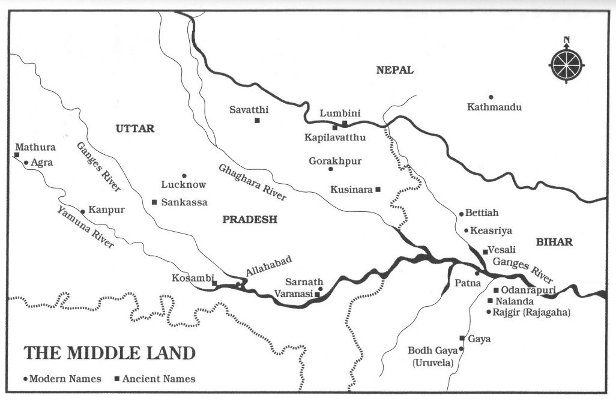MIDDLE LAND
The Middle Land (Majjhima Desa) was the ancient name for the north-central region of India, the valley of the Ganges and Yamunà Rivers, where the Buddha was born and where Buddhism began. In the scriptures, the Middle Land is said to extend in the east to the town of Kajaïgala, in the southeast to the Salaëavatã River, in the southwest to the town of Setakaõõika, in the west to the village of Thåõa, and its northern borders were marked by the Usãraddhaja Mountains (Vin.I,196). Few of these landmarks can be identified today, but the Middle Land corresponded to the modern Indian states of Uttar Pradesh and Bihar and the lowlands of Nepal. The Buddha believed that it was a distinct advantage to be reborn in the Middle Land, as indeed it probably was at that time, it being the main centre of the subcontinent's newly emerging civilisation (A.IV,226).
The Buddha's 45 years of travelling and wandering took him through an area of about 235,000 square kilometres, making him the most widely travelled of all the great religious teachers. The area in which Jesus taught, by contrast, is about 900 square kilometres. The furthest east the Buddha went which can still be identified is Kankjol (Kajaïgala, A.V,54) 18 kilometers south of Rajmahal, and the westernmost place is Madhura, 135 kilometers south of Delhi. These two places are nearly 1000 kilometers apart.
Popular legends in Sri Lanka and Thailand say the Buddha visited those countries and Nepalese Buddhists believe he visited the Kathmandu Valley. There is no mention of such visits in the Tipiñaka and no evidence that the Buddha ever travelled beyond the Middle Land. See Travels, the Buddha's.
